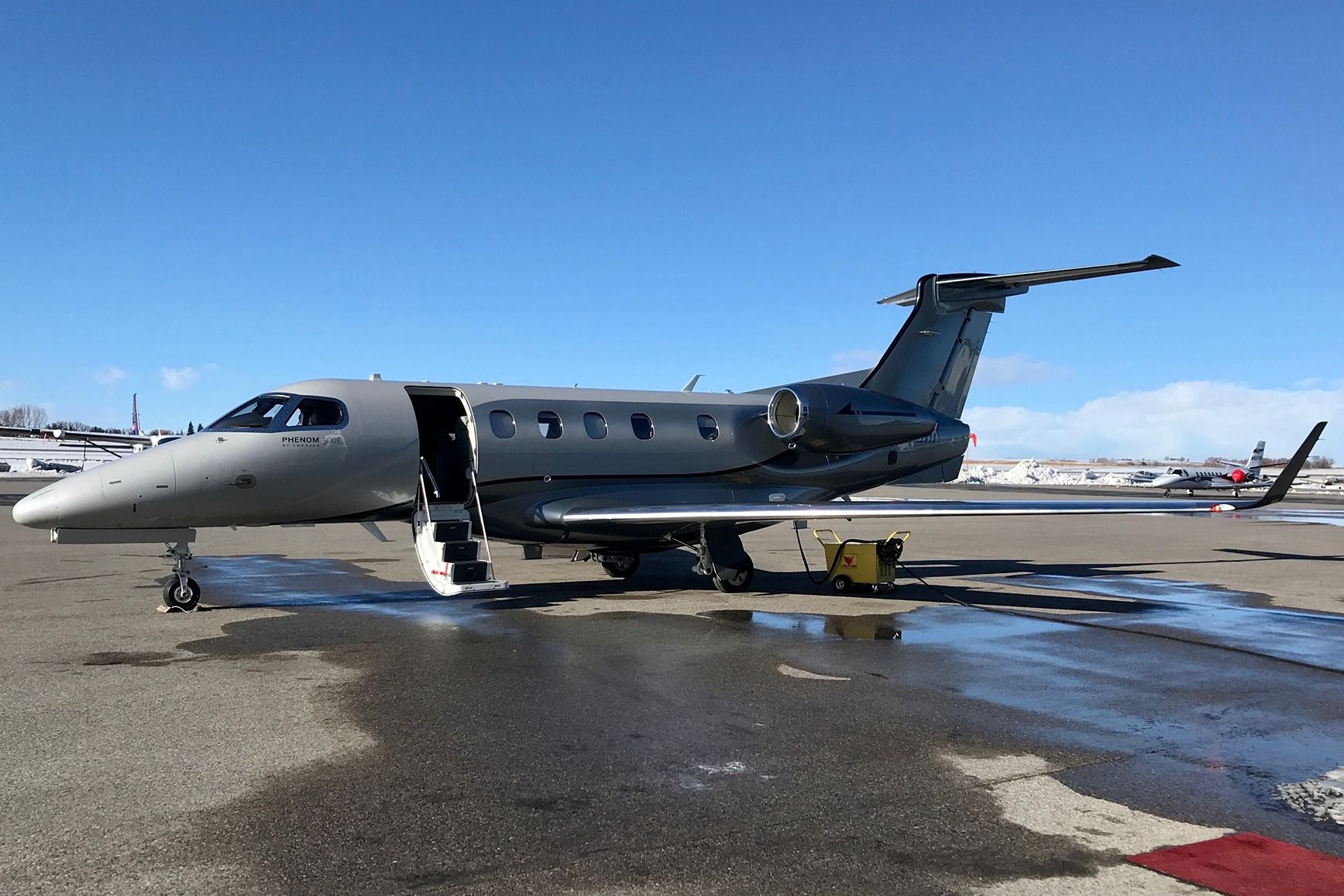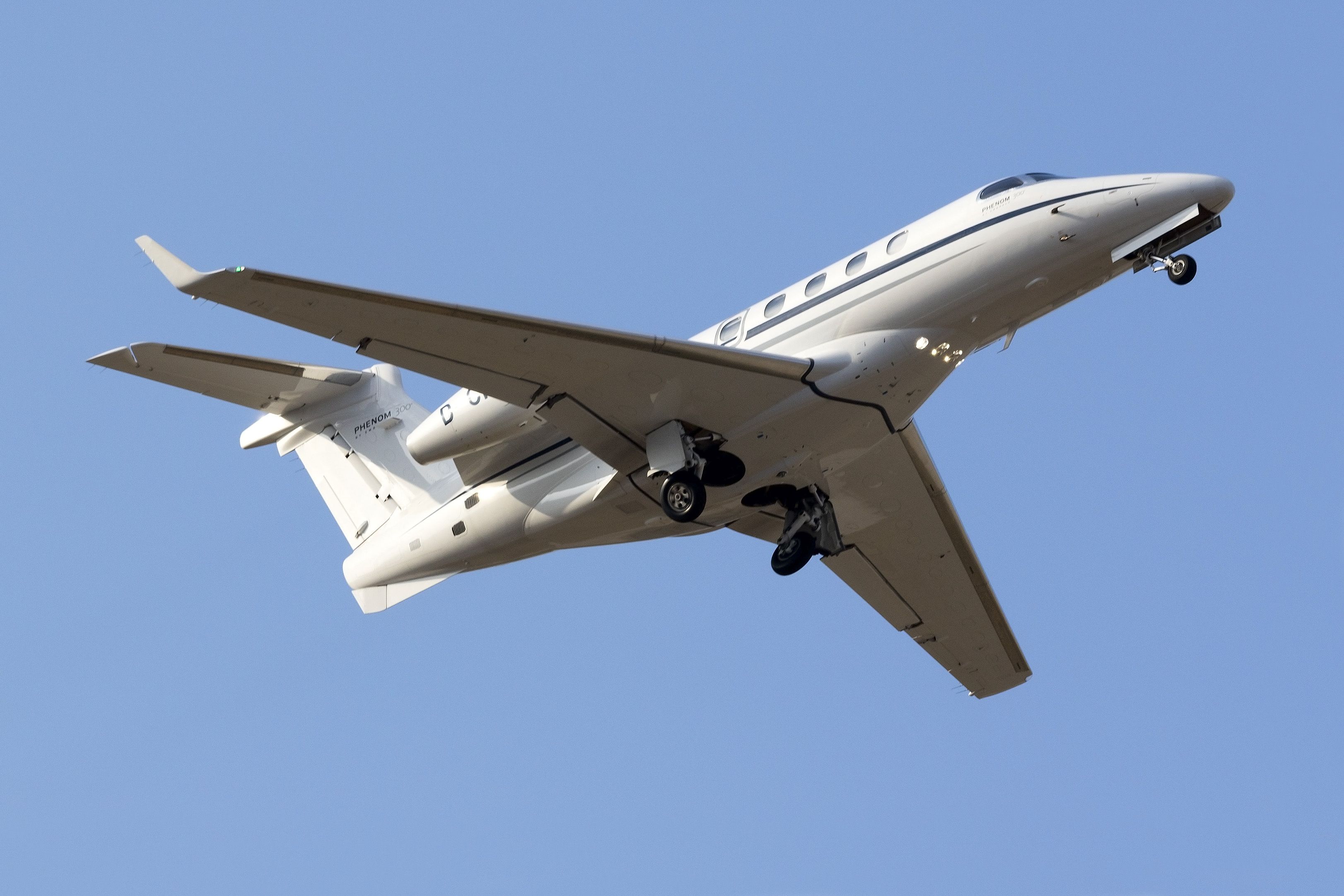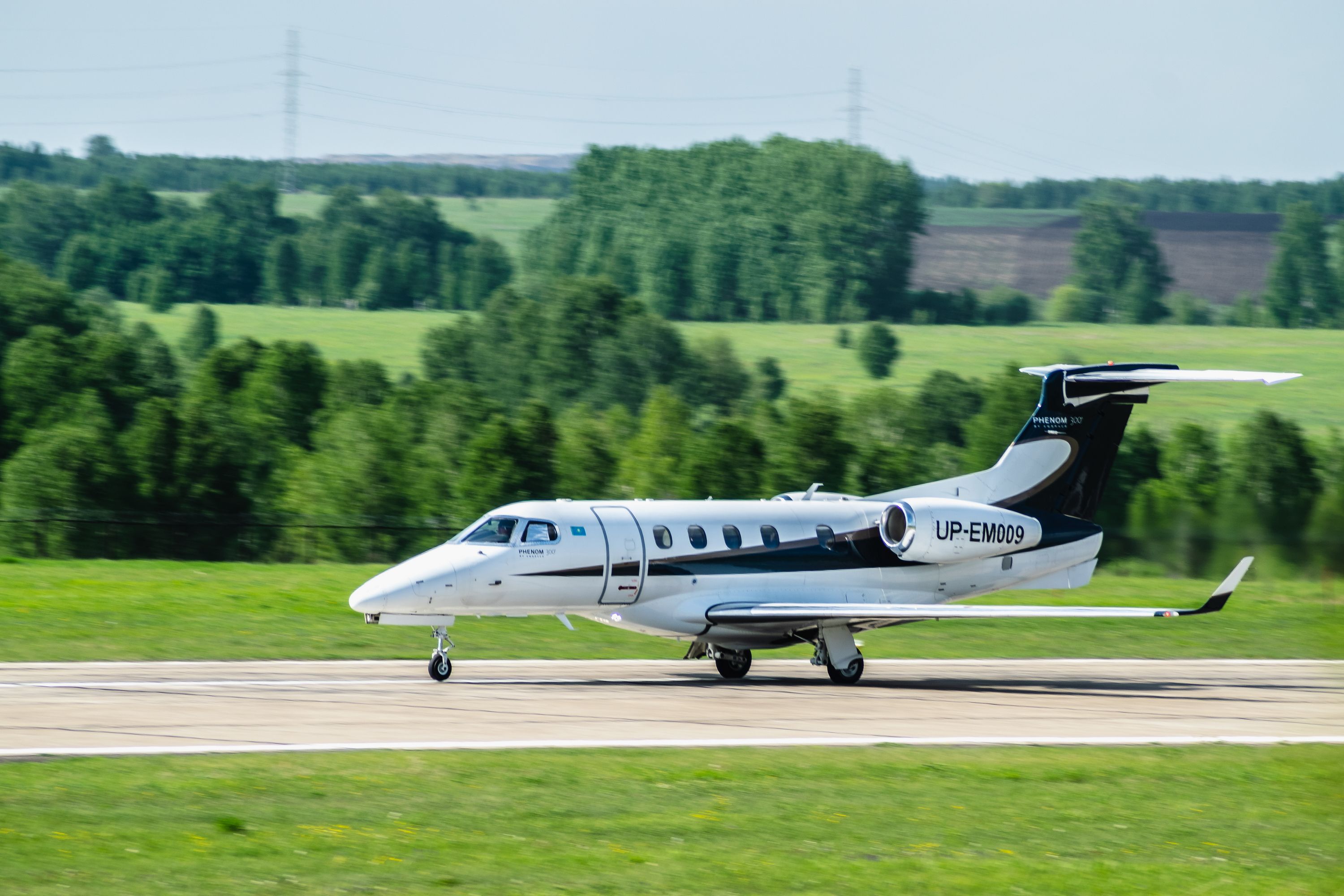Embraer is known as one of the world’s largest aviation manufacturers. The Brazilian government initially founded Embraer to begin developing a wide variety of domestic aerospace technology. It later expanded to produce technology and aircraft to be used domestically and exported to other countries. Its product lines range from commercial regional jets, like the Embraer ERJ and E-jet families, to large military transport aircraft or trainer aircraft that are utilized by the Brazilian military and other armed forces across the world.
Photo: InsectWorld | Shutterstock
However, the Brazilian aircraft manufacturer is also well known for its business jets. In early 2000, at the Farnborough Airshow,Embraer announced its introduction into the private aviation market. This came with the introduction of the Embraer Legacy 600, which was developed from its existing commercial regional jets in the ERJ family.
One of the São Paulo-based manufacturer’s most prominent jets is theEmbraer Phenom 300. The aircraft was initially conceptualized as early as the early 2000s. After several years, Embraer realized how extensive the market for light business jets was and began further developing the aircraft. Years later, the aircraft was well into production. Since its production began, over 700 total aircraft have been produced, and it has been one of the most flown aircraft in the world for several years,including 2023. Let’s take a closer look at the history of thePhenom 300. Let’s also take a closer look at what makes the aircraft so special, with a focus on the aircraft’s competitive range within the market.
Brief history
As previously mentioned, the Phenom 300 was initially conceptualized in the early 2000s. Embraer was in the process of developing the Phenom 100, a very light business jet that fits up to seven total passengers. During this initial research, many customers expressed extensive interest in a similar plane to the Phenom 100, but with a longer fuselage and improved performance specifications.
Photo: vvg42 | Shutterstock
Because of this, the company decided to develop a larger jet, which would later be coined thePhenom 300, in early 2004. It was initially designed as an extension of the Phenom 100, but Embraer would later classify the Phenom 300 as a clean sheet design due to how comprehensive the changes involved were.
The prototype Phenom 300 flew for the first time on April 29th, 2008, which began the flight testing process. Over the next year and a half, three different prototypes flew over 1,400 combined hours of testing. The aircraft received its type certification from the Federal Aviation Administration (FAA) in December 2009. The first delivery of the Phenom 300 occurred at the end of December 2009.

What Has Made The Embraer Phenom 300 So Popular In The USA?
The Embraer Phenom 300E has become the most actively used business jet in the United States.
In 2020, Embraer announced a significant upgrade package to the Phenom 300, which would later be designated as the Phenom 300E. The upgrades increased certain specifications, such as top speed and range. It also introduced a new avionics suite with other flight deck upgrades and interior improvements.
Notable design features
As mentioned earlier, the Phenom 300 became a unique clean sheet aircraft shortly into the development process. Nearly 20% of the aircraft is manufactured with composite materials to reduce weight. The airframe has the following dimensions:
- Length: 51 feet four inches
- Height: 16 feet nine inches
- Wingspan: 52 feet 2 inches
The aircraft’s exterior also features a movable horizontal stabilizer that is adjustable based on trim positions. This helps the aircraft operate out of airports with smaller runways, and it can take off on runways that are just over 3,200 feet and land on runways that are 2,212 feet long. The Phenom 300 also features fly-by-wire brakes.
The cabin of the Phenom 300 can hold up to nine passengers along with a two-passenger crew. The interior has several customizable options, such as rotating seats or a side-facing seat. The dimensions of the Phenom 300 are slightly larger than the Phenom 100 and measure as follows:
- Cabin height: 4.9 feet
- Cabin width: 5.1 feet
- Cabin length: 17.2 feet
The newer versions of the Phenom 300 utilize the Garmin G3000 avionics suite that features three large 12-inch displays. It uses traditional yokes for two pilots, although the aircraft can be flown with a single pilot. Other advanced features of the aircraft include:
- Predictive wind shear awareness.
- Stabilized approach.
- Emergency descent mode.
- A variable bleed air system
Range of the light business jet
The Phenom 300 is powered by two Pratt & Whitney Canada PW535E turbofan engines. Each of these provides over 3,475 pounds of thrust. These engines help power the aircraft to a maximum speed of 464 knots (534 miles per hour). The powerful engines and the lightweight features of the aircraft help the Phenom 300 reach a maximum range of 2,010 nautical miles (2,313 miles). This range is competitive with many of the aircraft’s competition. Some of the ranges of the aircraft are as follows:
|
Aircraft |
Range |
|---|---|
|
Embraer Phenom 300 |
2,010 nautical miles (2,313 miles) |
|
Cessna Citation XLS |
1,858 nautical miles (2,138 miles) |
|
Cessna Citation CJ4 |
2,165 nautical miles (2,491 miles) |
|
Pilatus PC-24 |
2,000 nautical miles (2,302 miles) |
|
Learjet 45 |
1,710 nautical miles (1,968 miles) |
Beyond the impressive range of the Phenom 300, the aircraft also flies at a service ceiling of 45,000 feet. Its fuel burn is typical at 760 pounds per hour when flying at 364 knots. Other specifications include the maximum takeoff weight (MTOW) of 18,551 pounds.






